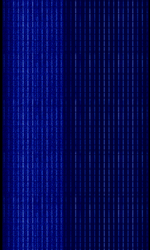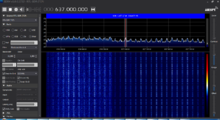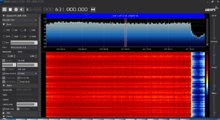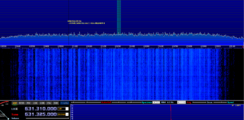5G 'New Radio' Cellular Radio - Downlink
| Cellular | |
|---|---|
| 1G: IS-54 D-AMPS - AMPS - Nordic Mobile Telephone (NMT) 2G: GSM - 2G CDMA (IS-95) |
New Radio refers to the 5th generation of cellular technology (5G).
5G is currently in commercial use across more than 90 countries. In the U.S, AT&T, Verizon and T-Mobile are the major 5G carriers.
T-Mobile launched commercial 5G service in 2019 with 600 MHzMegaHertz (MHz) 10^6 Hz (n71) and mmWave (n261, n260 and n258) bands. Merger with Sprint brought additional bands (n25, 1.9 GHzGigaHertz (GHz) 10^9 Hz and n41, 2.5 GHzGigaHertz (GHz) 10^9 Hz) for capacity.
5G can be either SA (Standalone) or non-Standalone (NSA) depending on the hardware and software implementations.
5G NR supports 2 distinct duplex modes, FDD and TDD. FDD, or Frequency Division Duplexing, utilizes paired spectrum with separate uplink and downlink channels. TDD, or Time Division Duplexing, allows both uplink and downlink to share the same spectrum by utilizing time slots. TDD bands such as n41, n77, and n78 are commonly used for high capacity deployments, while FDD is commonly used for coverage and stability.
NR Dual Connectivity (NR-DC) is a 5G connectivity option that allows simultaneous Sub6 and mmWave connections in NR SA deployments.
The actual sound of 5G is derived from 4G, its more of a "pulse sound", because of the UFMC modulation component.
Frequencies[edit]
There are 2 frequency ranges for 5G NR; Sub6 and mmWave (FR1 and FR2). The Sub6 range is defined as any frequency below 6 GHzGigaHertz (GHz) 10^9 Hz, such as mid-band and low-band 5G service. mmWave refers to any frequency above 24 GHzGigaHertz (GHz) 10^9 Hz, which is known as millimeter wave spectrum. mmWave 5G often has much higher throughput compared to Sub6 due to the abundant spectrum which allows for aggregation up to 800mhz of bandwidth.
List of frequencies can be found here.
Additional Images[edit]
Sound Samples[edit]
FDD Mode[edit]
Sound of Dish Wireless 5G band n71
TDD Mode[edit]



